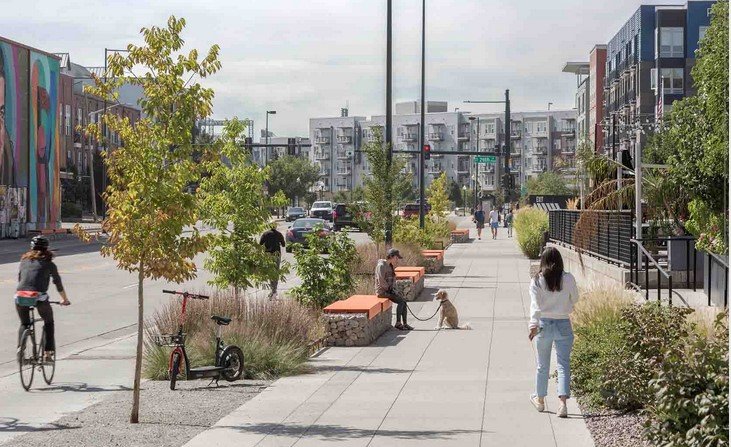Urban revitalization breathes new life into neglected or underdeveloped areas, transforming them into vibrant, functional, and appealing spaces. This process involves strategic planning, investment, and community engagement to revitalize neighborhoods and improve the quality of urban life. In this post, we’ll explore effective urban revitalization strategies that cities can adopt to rejuvenate their areas and foster growth.

1. Enhancing Public Spaces
Revamping Parks and Plazas
Revamping public spaces such as parks and plazas is a cornerstone of urban revitalization. Creating inviting and well-maintained green areas encourages community engagement and provides recreational opportunities. Modernizing existing parks with new facilities, improved landscaping, and added amenities can make these spaces more appealing and functional.
Creating Pedestrian-Friendly Areas
Transforming streets into pedestrian-friendly zones enhances the overall urban experience. Incorporating wider sidewalks, pedestrian crossings, and street furniture makes it easier and safer for people to walk around. This not only improves accessibility but also fosters local business growth by increasing foot traffic.
2. Supporting Local Businesses
Encouraging Small Business Development
Supporting local businesses is crucial for a thriving urban area. Providing incentives such as grants, tax breaks, or affordable leasing options can encourage the establishment and growth of small businesses. Local businesses contribute to the character and economy of a neighborhood, creating jobs and fostering a unique community identity.
Developing Business Improvement Districts
Business Improvement Districts (BIDs) are areas where businesses collectively fund improvements and services beyond those provided by the city. These districts can enhance the cleanliness, safety, and appeal of a neighborhood, making it more attractive for both businesses and visitors.
3. Investing in Infrastructure
Upgrading Transportation Networks
Modernizing transportation networks is essential for urban revitalization. Enhancing public transit options, improving roadways, and creating bike lanes make it easier for residents to navigate the city. Efficient transportation infrastructure also supports economic growth by connecting businesses and customers.
Improving Utilities and Services
Investing in the upgrade of utilities and services, such as water, sewage, and waste management, ensures that neighborhoods have the infrastructure needed for sustainable growth. Reliable services enhance the quality of life for residents and attract new businesses to the area.
4. Promoting Mixed-Use Development
Combining Residential and Commercial Spaces
Mixed-use development involves integrating residential, commercial, and recreational spaces into a single area. This approach fosters vibrant, walkable neighborhoods where people can live, work, and play in close proximity. Mixed-use developments also reduce traffic congestion and support local businesses by increasing foot traffic.
Redeveloping Vacant Properties
Redeveloping vacant or underutilized properties can revitalize a neighborhood and provide new housing and commercial opportunities. Repurposing old buildings or lots for new uses helps address urban blight and creates a more dynamic and appealing environment.
5. Engaging the Community
Involving Residents in Planning
Community engagement is a critical component of successful urban revitalization. Involving residents in the planning process ensures that their needs and preferences are considered. Public meetings, surveys, and focus groups provide valuable feedback and help build support for revitalization efforts.
Fostering Local Partnerships
Building partnerships with local organizations, businesses, and non-profits can enhance revitalization efforts. Collaborative initiatives often lead to more effective and sustainable solutions, as local stakeholders bring valuable insights and resources to the table.
6. Enhancing Safety and Security
Improving Lighting and Surveillance
Enhanced lighting and surveillance systems contribute to a safer urban environment. Installing streetlights, security cameras, and well-maintained public spaces deter crime and increase the sense of safety among residents and visitors.
Strengthening Community Policing
Community policing involves building strong relationships between law enforcement and residents. This approach fosters trust and cooperation, leading to a more proactive and effective response to crime and safety concerns.
7. Conclusion: A Holistic Approach to Urban Revitalization
Urban renewal plans is a multifaceted process that requires a holistic approach to be successful. By enhancing public spaces, supporting local businesses, investing in infrastructure, promoting mixed-use development, engaging the community, and improving safety, cities can transform neglected areas into thriving, vibrant neighborhoods. Implementing these strategies effectively not only rejuvenates urban spaces but also fosters sustainable growth and improves the quality of life for residents.




